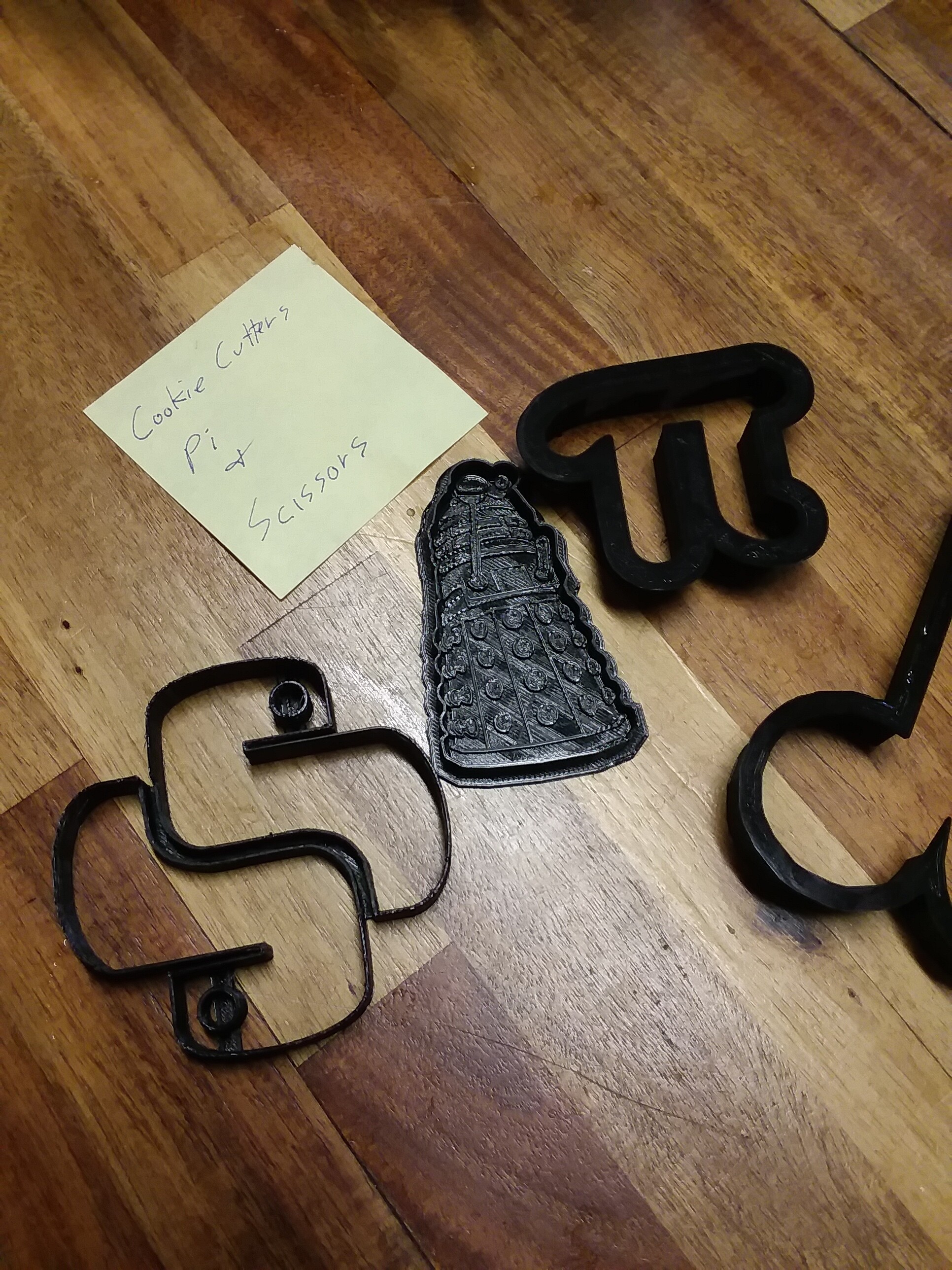Hey, I can figure out the dalek and pi cookie cutters, and even the (ahem) scissors.
But what the heck is that last one?
Nancyg

Hey, I can figure out the dalek and pi cookie cutters, and even the (ahem) scissors.
But what the heck is that last one?
Nancyg

The python logo.
There is also a rebel alliance logo as well.
While PLA itself is generally food safe, FDM printing is not considered food safe due to the nature of printing, and the inability to clean it properly. I am not sure if that would impact cookie cutters as the dough is cooked after the fact. Just some food for thought.
PLA filament isn’t food safe. FDM printing is.
Taulman 680 is an FDA approved filament: http://taulman3d.com/680-features.html
Ah, python logo… I was really worried it was a stylized Nazi SS…
https://reprage.com/post/36869678168/is-3d-printed-pla-food-safe a few quotes from the article to back my point about 3d printing not being safe:
PLA as a bulk material is food safe. It is commonly used for injection molding disposable spoons for yogurt bars, for example. PLA FILAMENT is, in 99.99% of cases, not food safe. It is not pure, virgin PLA. It includes additives to help in the printing process and dyes for color. This is mentioned in the article you linked. While you might be able to print pure, virgin PLA you can’t clean it to any FDA standard after printing and prior to use.
Stainless steel nozzles are available from many retailers.
Taulman 680 prints can be steam cleaned or boiled. PLA prints can’t. While this doesn’t mean that they are 100% safe for reuse, it does mean that they can be cleaned after printing and before use.
So dedicated components and the right filament means you can absolutely FDM 3D print cookie cutters or jello molds.
JP B
‐‐‐‐‐‐‐ Original Message ‐‐‐‐‐‐‐
https://formlabs.com/blog/guide-to-food-safe-3d-printing/
Article is from Formlabs, but covers a lot about FDM with a list of filaments and methods.
I can nearly guarantee the cookie cutters are pla printed, and most likely not from dedicated components. Over all 3d printing is not food safe. Are there exceptions sure, there is even food printers. But do you want to use the typical printers at home or even at the hive for food safe? OH HELL NO. Thats my point.